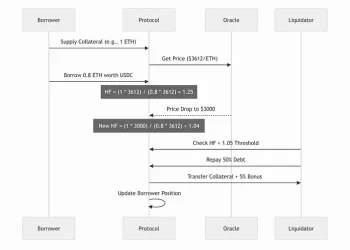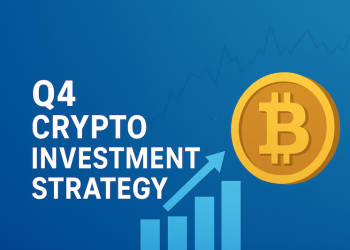What Is a Hard Fork?
Forks may be initiated by developers or members of a crypto community who grow dissatisfied with functionalities offered by existing blockchain implementations. They may also emerge as a way to crowdsource funding for new technology projects or cryptocurrency offerings.
A hard fork can be contrasted with a soft fork.
KEY TAKEAWAYS
- A hard fork refers to a radical change to the protocol of a blockchain network that effectively results in two branches, one that follows the previous protocol and one that follows the new version.
- In a hard fork, holders of tokens in the original blockchain will be granted tokens in the new fork as well, but miners must choose which blockchain to continue verifying.
- A hard fork can occur in any blockchain, and not only Bitcoin (where hard forks have created Bitcoin Cash and Bitcoin SV, among several others, for example).
Understanding a Hard Fork
A hard fork is when nodes of the newest version of a blockchain no longer accept the older version(s) of the blockchain; which creates a permanent divergence from the previous version of the blockchain.
Adding a new rule to the code essentially creates a fork in the blockchain: one path follows the new, upgraded blockchain, and the other path continues along the old path. Generally, after a short time, those on the old chain will realize that their version of the blockchain is outdated or irrelevant and quickly upgrade to the latest version.
How Forks Work
A fork in a blockchain can occur in any crypto-technology platform—not only Bitcoin. That is because blockchains and cryptocurrency work in basically the same way no matter which crypto platform they’re on. You may think of the blocks in blockchains as cryptographic keys that move memory. Because the miners in a blockchain set the rules that move the memory in the network, these miners understand the new rules.
However, all of the miners need to agree about the new rules and about what comprises a valid block in the chain. So when you want to change those rules you need to “fork it”—like a fork in a road—to indicate that there’s been a change in or a diversion to the protocol. The developers can then update all of the software to reflect the new rules.
It is through this forking process that various digital currencies with names similar to bitcoin have come to be: bitcoin cash, bitcoin gold, and others. For the casual cryptocurrency investor, it can be difficult to tell the difference between these cryptocurrencies and to map the various forks onto a timeline. To help sort this out, we have composed a history of the most important bitcoin hard forks of the past several years. Additionally, those looking to get involved with one of the best cryptocurrency exchanges need to tread carefully when investing in currencies like Bitcoin so as not to waste time and money on the wrong digital currency.
As the graphic below displays, nodes that are not upgraded reject the new rules, which creates a divergence, or hard fork, in the blockchain.
Reasons For a Hard Fork?
There are a number of reasons why developers may implement a hard fork, such as correcting important security risks found in older versions of the software, to add new functionality, or to reverse transactions—such as when the Ethereum blockchain created a hard fork to reverse the hack on the Decentralized Autonomous Organization (DAO).
After the hack, the Ethereum community almost unanimously voted in favor of a hard fork to roll back transactions that siphoned off tens of millions of dollars worth of digital currency by an anonymous hacker. The hard fork also helped DAO token holders get their ether (ETH) funds returned.1
Ethereum Classic. “Ethereum Classic Knowledge Base, Roadmap, ETC Timeline.”
The proposal for a hard fork did not exactly unwind the network’s transaction history. Rather, it relocated the funds tied to the DAO to a newly created smart contract with the single purpose of letting the original owners withdraw their funds.
DAO token holders could withdraw ETH at a rate of approximately 1 ETH to 100 DAO. The extra balance of tokens and any ether that remained as a result of the hard fork was withdrawn and distributed by the DAO curators to provide “failsafe protection” for the organization.
Hard Forks vs. Soft Forks
Hard forks and soft forks are essentially the same in the sense that when a cryptocurrency platform’s existing code is changed, an old version remains on the network while the new version is created.
With a soft fork, only one blockchain will remain valid as users adopt the update. Whereas with a hard fork, both the old and new blockchains exist side by side, which means that the software must be updated to work by the new rules. Both forks create a split, but a hard fork creates two blockchains and a soft fork is meant to result in one.
Considering the differences in security between hard and soft forks, almost all users and developers call for a hard fork, even when a soft fork seems like it could do the job. Overhauling the blocks in a blockchain requires a tremendous amount of computing power, but the privacy gained from a hard fork makes more sense than using a soft fork.

























